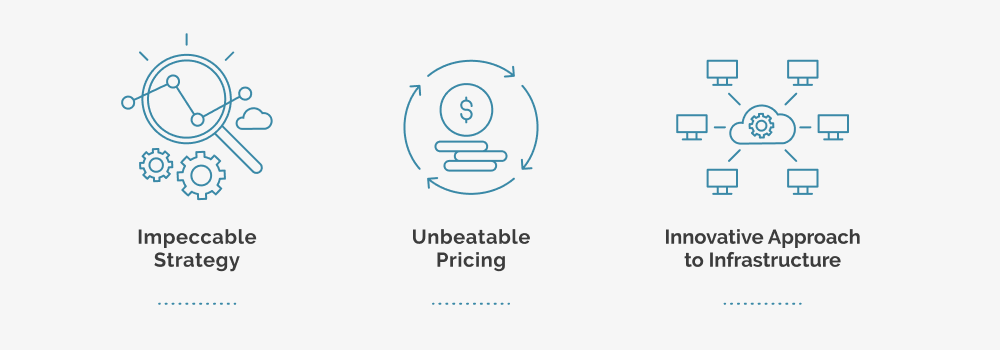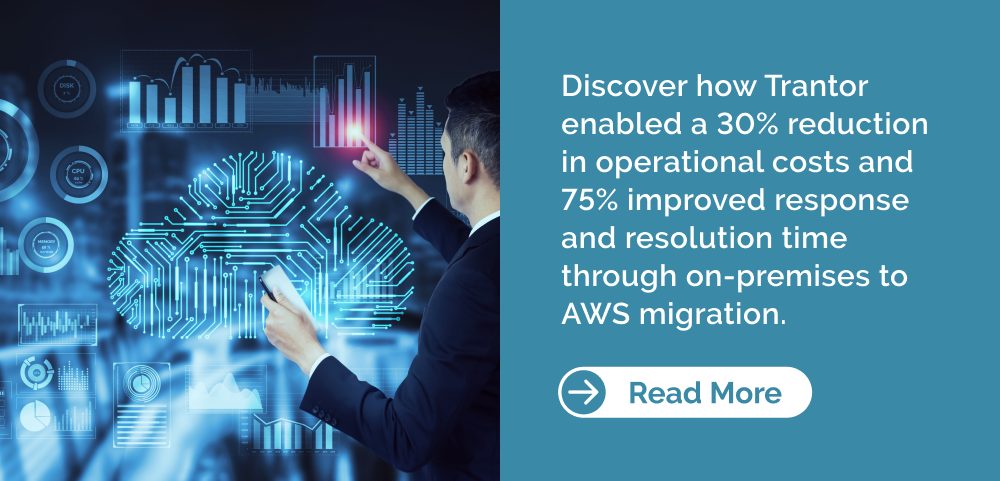Amazon Web Service, zBlog
The Debate on AWS Cloud Monopoly: Pros and Cons of Exclusive Cloud Migration
trantorindia | Updated: July 8, 2023

Introduction
For a cloud service that hit the market back in 2006, it’s to Amazon’s credit that they built upon Licklider’s ideal in such a phenomenal way they ended up gaining the market monopoly on the public cloud.
Even today—17 years since they launched—Amazon commands around 34% of the public cloud by market share, trailed by Microsoft (21%) and Google (11%).
What makes Amazon Web Services so extraordinary? Especially in light of the new initiatives by the government to incentivize local cloud providers to break this monopoly, is AWS migration worth the hype?
Let’s find out.
Why Does Amazon Command Cloud Monopoly?

Amazon’s innovative business model extends to its public cloud service strategies. You could say that this retail (and now, cloud) giant knows what their clients and customers seek.
Three key differentiators hand AWS a syndicate over the public cloud served in a silver platter:
- 1. Impeccable Strategy
Amazon manifested the concept of the Virtuous Circle by onboarding customers on its public cloud back in 2006 and adding more services, features, and servers utilizing its resources well.
This, in turn, triggered more customers to sign in on what you see today as a snowball effect.
2. Unbeatable Pricing
Considering the scale of operations it was undertaking, Amazon could capitalize on the economies of scale and progressively offer unmatchable price slashes.
By 2021, AWS had slashed its pricing for the 107th time since its launch in 2006. Such a downward-pricing model isn’t sustainable at the level that AWS’s competitors exist in the market.
3. Innovative Approach to Infrastructure
While its competitors saw the cloud as purely the cloud, AWS sought potential from its cloud services.
Taking in the trends and innovative approaches, the AWS which started as a simple development testing environment, quickly expanded to a full-blown cloud operations infrastructure.
For the Debate: AWS Cloud Migration Benefits

Commanding ownership of about a third of the public cloud calls for justification, AWS provides several key advantages to businesses that are pivotal for the new world order:
- Guaranteeing 99.95% uptime in minutes per month in its SLA, AWS delivers on its claim through low-latency and high-bandwidth connections.
- With block storage that orchestrates controlling throttling depending on the block size, it also has proportionate IOPS.
- Clients get flexible scaling and load balancing because of extensive server farms.
- AWS provides cost-efficiency to its clients, with pricing and custom models becoming more and more economical over the years.
Against the Debate: AWS Cloud Drawbacks
On the dark side of the moon, there are several disadvantages to AWS migrations:
- The EC2 and security is the first limitation with AWS cloud—while you do get all the defaults, the limits differ from region to region, which may create problems with global operations.
- You won’t find many skilled hands to deliver a reliable AWS operation for your organization. The lack of experts in the market spikes the hiring demand exponentially.
- Price variations could be daunting to manage, with variations in the cost of land, electricity, fiber connections, and taxes affecting the final figures.
Handy Practical Tips to Inform AWS Migration Strategies

Designing a good AWS migration strategy is all about being crystal clear about a few things: your data needs, your refactoring needs, the metrics and numbers, and all the ancillaries:
- Not all your data are alike; you need to assess it for ease of migration. More often than not, about 80% of the data would go over without problems, but the remaining 20% would require extreme effort. Identify this data and create its strategy.
- Refactoring is a painful task that requires modernizing your applications and making them compatible with the new computing environment. This aspect needs a significant chunk of your budget and time. It’s justifiable only when the existing application is legacy or requires intensive data processing.
- In case refactoring isn’t making sense for your operations, you can always Lift and Shift your applications – reinstall the same applications as-is in the new environment but with stunted features and benefits.

Does AWS Have Risks?
Like any other entity existing on the world wide web, yes, AWS migration does have risks.
- Vendor reliability is tough to establish, especially when the brand is as massive as Amazon. One massively disruptive server failure in AWS (in 2017) stirred the world for five hours, where more servers than intended were taken offline. Five hours in business time translates into millions of lost dollars.
- AWS is an extensive service with many permutations and combinations of deployment. A mismanaged cloud migration strategy to such a complex platform could easily overrun your budget while stretching out the timelines and putting critical operations on hold.
So…What are the Alternatives?
The Big Three of today’s cloud—AWS, Microsoft, and Google, come tete-a-tete in features and pricing. This gives you an out from AWS if it isn’t the right service suited for your business.
| Property | AWS | Microsoft Azure | Google Cloud |
|---|---|---|---|
| Compute | EC2, Elastic Beanstalk, Kubernetes and containers, Lambda | Azure VM, App Service, Kubernetes, and Functions | Google compute engine, App engine, Kubernetes, GoogleCloud functions |
| AI/ML | Polly, SageMaker, Comprehend, Lex | Databricks, Cognitive Search, Bot Service, Cognitive Services, ML | Vertex AI, CX, Cloud Vision, Virtual Agents, AutoML |
| Price | Free tier for one year; pricing based on region and instance type | Free trial for one year, custom pricing in pay as you go | Free trial for 90 days with $300 on credit, not autocharged after 90 days. |
All the basics are covered by all the cloud providers, leaving the matter of instance use, refactoring requirements, budget constraints, and agility requirements as the decision influencers.
Successes
Cloud migration takes time; it all depends on the scale your business operates. For example, Netflix took seven years to migrate fully to AWS and completely shut down its data centers.
After their AWS migration, Netflix’s overall viewing grew by the trillion within eight years of the shift. They had 8x streaming members in 2016 than they did in 2008.
In Conclusion
Your business can succeed with AWS cloud, given that it gets the right direction. Trantor is an AWS Advanced Consulting Partner, enabling your business to benefit from cost economies, agility, and scalability in your cloud infrastructure with AWS migrations.
We can aid your business with seamless migrations to AWS, keeping the risks at bay while maintaining budget limits.
Learn how you can improve your AWS migration efficiency with Trantor; talk to our experts today.




